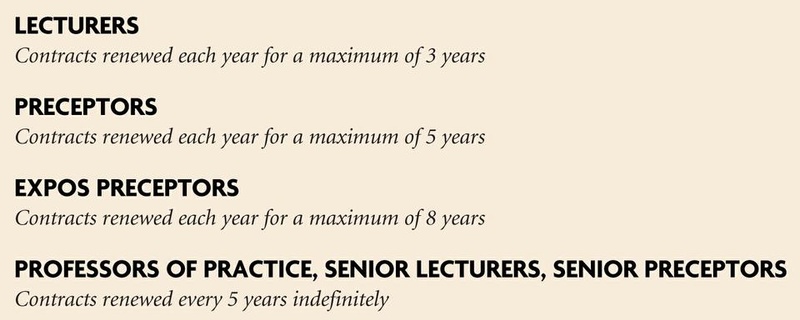David J. Malan ’99, whose introductory computer course CS50 has seen enrollment more than triple since he took over four years ago, epitomizes Harvard’s recent emphasis on good teaching.
But that hasn’t guaranteed him a permanent job.
Even as the Faculty of Arts and Sciences embarks on a renewed effort to prioritize undergraduate education, it continues to operate under a system that looks beyond performance in the classroom to reward its faculty with academia’s ultimate form of job security: tenure.
Professors must demonstrate a combination of research and teaching to enter the tenure track, so for many instructors who, like Malan, spend most of their time teaching, tenure is not an option.
But these instructors also play an integral role in undergraduate education: according to an internal 2009 report on non-ladder faculty—those not on tenure track—recently obtained by The Crimson, this segment teaches nearly one-third of enrollments.
The document states that 61 percent of enrollments across FAS were taught by ladder faculty in 2008. Non-ladder faculty—which the report defines as lecturers, preceptors, and professors of the practice—taught 29 percent of enrollments, while the remaining 10 percent were taught by visiting faculty, professors emeriti, and professors from other Harvard schools.
While several non-tenure track professors, including Malan, declined to comment for this article, some ask how the University can retain its best teachers without giving them tenure.
AN ARMY OF NON-LADDER FACULTY
Non-ladder faculty members represent some of the biggest names on campus: Malan is a senior lecturer on a renewable five-year contract; Jeffrey A. Miron, who leads the second largest course in the Economics Department, is also a senior lecturer; and Robert A. Lue, who helped found and still teaches LS1a, is a professor of practice on a similar contract.
In the spring of 2009, economics professor James H. Stock and members of the Advisory Committee on Non-Ladder Appointments submitted the report on non-ladder faculty to the Dean of the Faculty of Arts and Sciences Michael D. Smith that recognized the vital role that cadre of teachers plays on campus.
“Through the use of non-ladder faculty, the FAS is able to deploy its resources and instructors to their best comparative advantage,” the report states.
As the report notes, ladder faculty probably teach even less than the estimated 61 percent of enrollments. For example, tutorial classes often list a ladder faculty member as the course head, but delegate teaching responsibilities to non-ladder appointments.
And large courses often rely on an army of non-ladder faculty or graduate students to teach most of the course material. The introductory course Economics 10, led by economics professor N. Gregory Mankiw, has 31 section leaders who teach the majority of classes.
Economics Department Chair John Y. Campbell said non-ladder faculty offer a pragmatic solution to dealing with the reality of limited resources, in terms of finances and qualified manpower.
“FAS will always want the core of the teaching done by ladder faculty, but it makes sense to have some flexibility around the edges to augment that teaching,” Campbell said.
Read more in News
Randall Receives New York Times Book Award

















